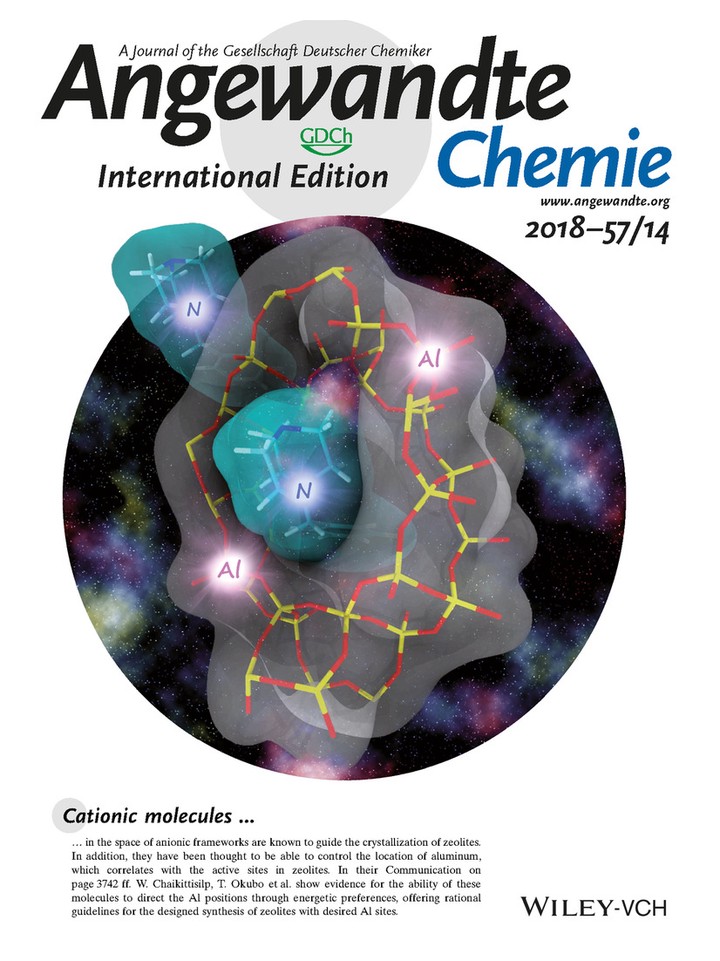Directing Aluminum Atoms into Energetically Favorable Tetrahedral Sites in a Zeolite Framework by Using Organic Structure‐Directing Agents
 Designed by Koki Muraoka
Designed by Koki MuraokaAbstract
The contents and locations of Al in the zeolite frameworks are one of the key factors determining the physicochemical properties of zeolites. Systematic evaluation of the characteristics of zeolites with a wide variety of framework topologies, a wide range of Si/Al ratios, and various locations of Al is of great significance, but very challenging due to the limitation of the realizable ranges of Al contents in zeolites as well as the limited information on the Al locations obtained from the current analytical techniques. Here, we report the systematic analysis of the energetics of aluminosilicate zeolites with 209 existing framework topologies at different Si/Al ratios using molecular mechanics. More than 43 000 initial structures were generated to give comprehensive views of the energetics of zeolites. The results coincide well with the structural knowledge obtained experimentally. It was revealed that the relation between the relative framework energies versus the Al contents varies in accordance with the topologies, suggesting that the relative stability of zeolites depends not only on the topologies, but also on the substituting contents of Al. For particular topologies with the same Al contents, in addition, comparisons between random and specific distributions of Al showed that zeolite with Al at a particular T site is energetically more stable than those with random distributions, suggesting the inherent influences of the Al locations. The contents and locations of Al in zeolites likely have a certain preference that may reflect the range of chemical compositions, the Al distributions, and consequently the physicochemical properties of realizable aluminosilicate zeolites.